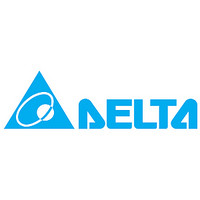LCP-1250B4QSRB Delta Electronics, Inc., LCP-1250B4QSRB Datasheet - Page 5

LCP-1250B4QSRB
Manufacturer Part Number
LCP-1250B4QSRB
Description
Rohs Compliant Small Form Factor Pluggable Transceiver For Gigabit Ethernet And Fiber Channel
Manufacturer
Delta Electronics, Inc.
Datasheet
1.LCP-1250B4QSRB.pdf
(11 pages)
Notes:
1)
2)
3)
4)
5)
6)
7)
8) TD-/+: These are the differential transmitter inputs. They are AC-coupled, differential lines with 100Ω
DELTA ELECTRONICS, INC.
board. Pull up voltage between 2.0V and VccT, R+0.3V. When high, output indicates a laser fault of some kind.
Low indicates normal operation. In the low state, the output will be pulled to < 0.8V.
with a 4.7 – 10 K Ω resistor. Its states are:
host board. The pull-up voltage shall be VccT or VccR (see Section IV for further details). Mod-Def 0 is grounded
by the module to indicate that the module is present Mod-Def 1 is the clock line of two wire serial interface for
serial ID Mod-Def 2 is the data line of two wire serial interface for serial ID
Pull up voltage between 2.0V and VccT, R+0.3V. When high, this output indicates the received optical power is
below the worst-case receiver sensitivity (as defined by the standard in use). Low indicates normal operation. In
the low state, the output will be pulled to < 0.8V.
terminated with 100Ω (differential) at the user SERDES. The AC coupling is done inside the module and is thus
not required on the host board. The voltage swing on these lines will be between 370 and 2000 mV differential
(185 – 1000 mV single ended) when properly terminated.
connector pin. Maximum supply current is 300mA. Recommended host board power supply filtering is shown
below. Inductors with DC resistance of less than 1 ohm should be used in order to maintain the required voltage
at the SFP input pin with 3.3V supply voltage. When the recommended supply-filtering network is used, hot
plugging of the SFP transceiver module will result in an inrush current of no more than 30mA greater than the
steady state value. VccR and VccT may be internally connected within the SFP transceiver module.
differential termination inside the module. The AC coupling is done inside the module and is thus not
required on the host board. The inputs will accept differential swings of 500 – 2400 mV (250 – 1200
mV single-ended), though it is recommended that values between 500 and 1200 mV differential (250 –
600 mV single-ended) be used for best EMI performance.
TX Fault is an open collector/drain output, which should be pulled up with a 4.7K – 10KΩ resistor on the host
TX disable is an input that is used to shut down the transmitter optical output. It is pulled up within the module
Low (0 – 0.8V):
(>0.8, < 2.0V):
High (2.0 – 3.465V):
Open:
Mod-Def 0,1,2. These are the module definition pins. They should be pulled up with a 4.7K – 10KΩresistor on the
LOS (Loss of Signal) is an open collector/drain output, which should be pulled up with a 4.7K – 10KΩ resistor.
VeeR and VeeT may be internally connected within the SFP module.
RD-/+: These are the differential receiver outputs. They are AC coupled 100Ω differential lines which should be
VccR and VccT are the receiver and transmitter power supplies. They are defined as 3.3V ±5% at the SFP
Transmitter on
Undefined
Transmitter Disabled
Transmitter Disabled
5
www.deltaww.com
2008/1/21
Rev. 0B











